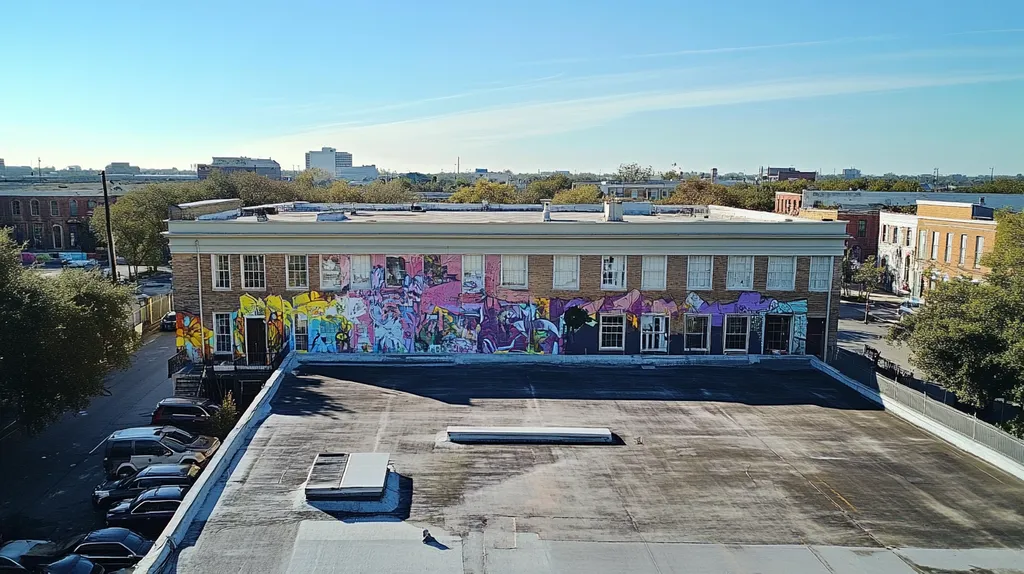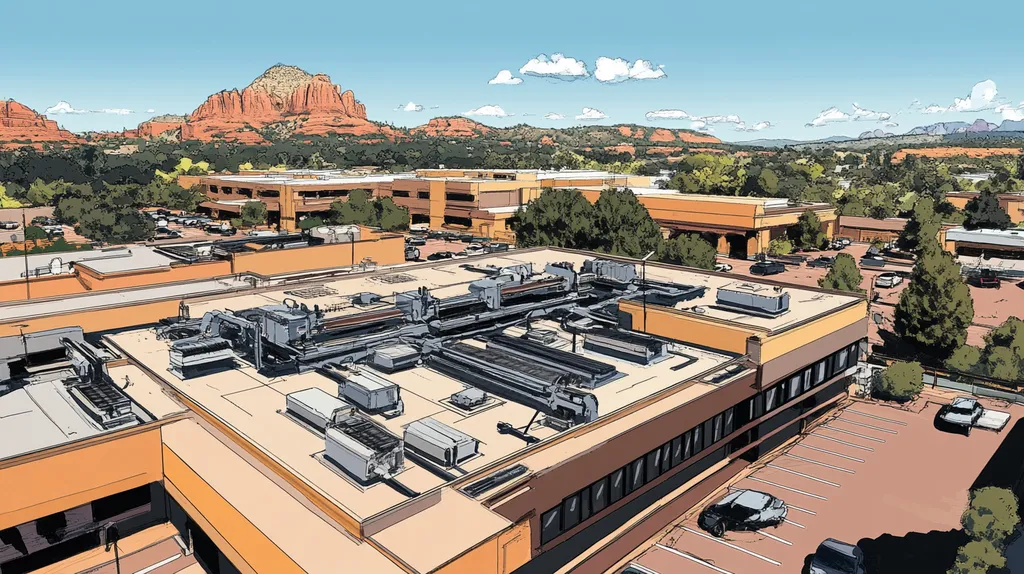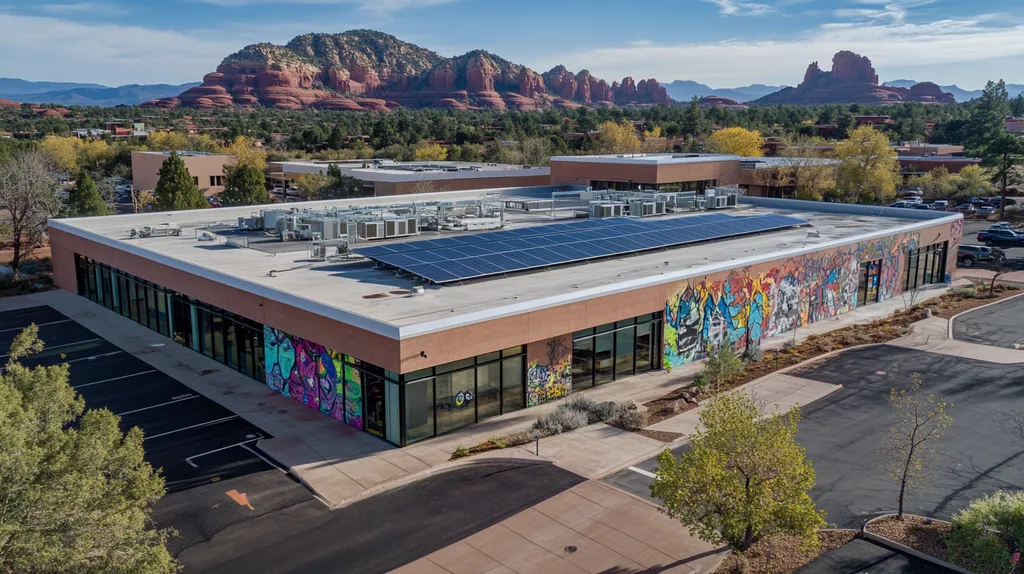Welcome to today’s Battle Royale featuring two roofing heavyweights: “Roof Jack Systems” in the east corner versus “Penetration Sealants” in the west!
Tonight’s showdown pits these contenders against each other across six punishing rounds designed to test every aspect of their performance for Compliance with Regulations for Roof Penetrations.
At stake? Millions in potential costs, decades of building protection, and the critical performance demands of modern commercial and industrial facilities.
Our professional judging panel will evaluate each round on technical merit, real-world performance, and value delivery. After all six rounds, we’ll declare our ultimate champion.
Ladies and gentlemen, facility managers and building owners… it’s time to rumble!
ROUND 1: INITIAL COSTS & INSTALLATION
Every roof penetration creates a potential vulnerability in your building’s first line of defense. Making the wrong choice between roof jack systems and penetration sealants can lead to costly water damage, compliance violations, and premature roof failure. Proper sealing between roof penetrations and surfaces is decisive in preventing water infiltration and structural damage.
Material Expenses
Roof jack systems represent a significant upfront investment, typically costing 40-60% more than basic penetration sealants. These systems utilize commercial-grade metals, engineered plastics, and specialized flashing components designed for maximum durability.
Penetration sealants offer lower initial material costs through simplified components and synthetic formulations. While this makes them attractive for budget-conscious projects, the materials often require more frequent replacement.
Quality materials directly impact long-term performance and regulatory compliance. Proper sealing between the roof penetration and roof surface is crucial for preventing water damage and maintaining structural integrity. (source: Innotech)
The durability and reliability of roof jack materials earn them the clear “ADVANTAGE” in this category.
Installation Complexity
Installing roof jack systems demands precise measurements, careful positioning, and specialized expertise. The multi-step process includes cutting openings, securing mounting hardware, and properly flashing all components.
Penetration sealants utilize simpler application methods that require less technical skill. This reduced complexity can translate to lower labor costs and fewer installation variables.
However, both options demand proper execution to achieve lasting results. Poor installation of either system negates any theoretical benefits.
Given the balanced trade-offs between technical requirements and ease of application, this category results in a “TIE.”
Project Timeline
Roof jack installation typically spans 2-3 days per penetration due to precise fitting requirements and cure times. This extended timeline allows for proper inspection of each installation phase but extends project duration.
Penetration sealants can often be applied in a single day, minimizing disruption to building operations. The streamlined application process reduces coordination requirements between trades.
While faster completion offers clear advantages, rushed installations risk compromising long-term performance. However, when properly executed, the efficiency of penetration sealants provides measurable benefits.
The significantly shorter project duration gives penetration sealants the “ADVANTAGE” in this category.
ROUND 1 WINNER: TIE
ROUND 2: DURABILITY & LIFESPAN
The longevity of roof penetration solutions directly impacts building safety, maintenance costs, and regulatory compliance. Poor choices in penetration protection can lead to catastrophic failures, with repair costs often exceeding $100,000 for major commercial properties. Understanding the durability differences between roof jacks and sealants is crucial for making informed decisions that protect both assets and occupants.
Weather Resistance
Roof penetrations must withstand extreme temperature variations, UV exposure, and severe weather events. Proper protection against these elements is essential for maintaining structural integrity and meeting building codes.
Roof jack systems excel in weather resistance through their rigid construction and premium materials. Their metal and engineered plastic components maintain structural stability across temperature extremes and resist UV degradation effectively.
Penetration sealants offer initial weather protection but can degrade significantly when exposed to prolonged environmental stress. Their chemical composition makes them particularly vulnerable to UV damage and temperature cycling.
Given their superior environmental durability, roof jack systems earn the clear “ADVANTAGE” in this category.
Movement Accommodation
Building movement from thermal expansion, settling, and equipment vibration creates ongoing stress on roof penetrations. The ability to maintain seals under these dynamic conditions directly impacts system longevity.
Roof jack systems use rigid mounting that can resist movement but may transfer stress to surrounding roof materials. While engineered for stability, their inflexibility can sometimes lead to increased wear at connection points.
Penetration sealants provide superior flexibility and movement accommodation. Their elastic properties allow them to maintain watertight seals even with significant building movement.
The superior flexibility of penetration sealants gives them the “ADVANTAGE” in this category.
Service Life
Roof coverings and penetration solutions must maintain their protective capabilities throughout their expected service life. This includes resisting wind loads and maintaining structural integrity across diverse weather conditions. (source: Insurance Institute for Business & Home Safety)
Roof jack systems typically deliver 15-20 years of reliable service when properly installed and maintained. Their robust construction and resistance to degradation result in predictable, long-term performance.
Penetration sealants generally require replacement every 5-7 years, even under ideal conditions. This shorter lifespan increases maintenance requirements and the risk of failure between service intervals.
The significantly longer service life of roof jack systems earns them the “ADVANTAGE” in this category.
ROUND 2 WINNER: Roof Jack Systems
ROUND 3: PERFORMANCE FACTORS
Building codes and regulatory requirements have made proper roof penetration performance more critical than ever for commercial properties. Failures in these systems can result in violations carrying penalties up to $10,000 per incident, while also compromising building integrity and occupant safety. Understanding how different penetration solutions perform across key metrics helps property owners make informed decisions that ensure long-term compliance.
Code Compliance & Safety
Modern building codes establish strict requirements for roof assemblies and penetrations based on construction type and building use. Proper penetration protection must meet specific standards for fire resistance, wind loading, and structural integrity to maintain compliance with local regulations.
Roof jack systems typically exceed minimum code requirements through standardized components and established performance ratings. Their engineered design ensures consistent compliance across varied applications and environmental conditions.
Penetration sealants can meet basic code requirements but often require additional documentation and testing to verify compliance. Their performance can vary significantly based on application methods and environmental factors. (source: Insurance Institute for Business & Home Safety)
The reliable code compliance of roof jack systems earns them the clear “ADVANTAGE” in this category.
Water Resistance
Water infiltration through roof penetrations represents one of the most common causes of commercial building damage. Proper sealing against moisture intrusion is essential for protecting structural components and interior spaces.
Roof jack systems create positive water seals through integrated flashing and mechanical connections. Their rigid construction maintains watertight barriers even under sustained exposure to standing water.
Penetration sealants rely on chemical bonds that can degrade over time, potentially compromising water resistance. While initial protection may be adequate, long-term performance often diminishes with exposure to moisture and temperature changes.
The superior moisture protection of roof jack systems gives them the “ADVANTAGE” in this category.
Load Distribution
Roof penetrations must effectively distribute both static and dynamic loads to prevent stress concentration and material failure. Proper load management directly impacts system longevity and maintenance requirements.
Roof jack systems excel at distributing loads through engineered mounting plates and structural supports. This mechanical advantage prevents localized stress points that could compromise roof integrity.
Penetration sealants provide minimal load distribution capabilities, relying instead on surrounding roof materials for support. This can lead to increased wear and potential failure points around penetration sites.
The superior load management of roof jack systems earns them the “ADVANTAGE” in this category.
ROUND 3 WINNER: ROOF JACK SYSTEMS
ROUND 4: MAINTENANCE REQUIREMENTS
Proper maintenance of roof penetrations directly impacts building safety, regulatory compliance, and long-term operational costs. Industry data shows that 90% of premature roof failures stem from inadequate maintenance of penetration points. For commercial properties, these failures can trigger regulatory violations with fines exceeding $25,000, while repair costs often surpass $100,000.
Inspection Frequency
Regular inspection schedules represent a critical factor in maintaining compliant roof penetrations. The frequency and complexity of these inspections directly impact operational costs and regulatory compliance.
Roof jack systems typically require quarterly inspections to verify mechanical integrity and ensure proper drainage. These inspections must evaluate gasket condition, mounting hardware stability, and flashing integrity.
Penetration sealants demand monthly visual inspections to identify early signs of degradation or separation. Their chemical composition requires more frequent monitoring to maintain compliance with water resistance standards.
The reduced inspection complexity of roof jack systems earns them the “ADVANTAGE” in this category.
Repair Requirements
When maintenance issues arise, the complexity and cost of repairs significantly impact overall system viability. The repair process must maintain compliance while minimizing disruption to building operations.
Roof jack systems often require specialized components and technical expertise for repairs. While individual parts can be replaced, the process demands precise fitting and proper torque specifications.
Penetration sealants offer simpler repair solutions through localized reapplication. This straightforward approach reduces both labor requirements and potential compliance complications.
The simplified repair process gives penetration sealants the “ADVANTAGE” in this category.
Preventive Maintenance
Effective preventive maintenance programs protect long-term performance while ensuring continuous regulatory compliance. Building America Solution Center emphasizes that proper inspection and maintenance of roof penetrations is crucial for maintaining a continuous water control layer across the roof assembly. (source: Building America Solution Center)
Roof jack systems benefit from standardized preventive maintenance procedures that target specific mechanical components. This systematic approach helps maintain consistent performance but requires dedicated resources.
Penetration sealants need minimal preventive maintenance beyond regular inspection and occasional reapplication. Their simplified maintenance requirements reduce ongoing operational demands.
The streamlined maintenance approach gives penetration sealants the “ADVANTAGE” in this category.
ROUND 4 WINNER: Penetration Sealants
ROUND 5: SUSTAINABILITY CREDENTIALS
Environmental regulations and sustainability requirements are reshaping commercial roofing compliance standards. Poor choices in roof penetration solutions can result in significant environmental impacts and compliance violations, with penalties reaching up to $50,000 for severe infractions. The growing focus on green building certifications makes sustainable roof penetration choices crucial for long-term regulatory compliance.
Material Lifecycle Impact
Roof penetration solutions must demonstrate environmental responsibility throughout their entire lifecycle, from manufacturing through disposal. The environmental impact of materials directly affects compliance with green building standards and sustainability regulations.
Roof jack systems utilize durable metals and engineered plastics that offer excellent recyclability at end-of-life. Their extended service life reduces waste generation and replacement frequency, though manufacturing processes can be energy-intensive.
Penetration sealants typically contain synthetic compounds that may pose disposal challenges and often require more frequent replacement. However, modern formulations emphasize low VOC content and reduced environmental impact during application.
The superior recyclability and longevity of roof jack systems earns them the “ADVANTAGE” in this category.
Energy Performance
Roof penetrations can significantly impact building energy efficiency through thermal bridging and air leakage. Proper selection and installation of penetration solutions directly affects overall building energy performance.
Roof jack systems provide superior thermal isolation through engineered designs that minimize heat transfer. Their rigid construction maintains consistent performance throughout extreme temperature variations.
Penetration sealants offer limited thermal resistance and may deteriorate under prolonged temperature cycling. This can lead to increased energy loss and reduced building efficiency over time.
The superior thermal performance of roof jack systems gives them the “ADVANTAGE” in this category.
Resource Conservation
The installation and maintenance of roof penetration solutions must align with resource conservation goals while maintaining regulatory compliance. Roof coverings and assemblies must meet specific performance requirements while minimizing environmental impact. (source: Insurance Institute for Business & Home Safety)
Roof jack systems demand significant material resources during production and installation. Their complex components often require specialized manufacturing processes that consume substantial energy.
Penetration sealants utilize minimal materials and offer simplified installation processes that reduce resource consumption. Their streamlined application methods minimize waste generation and energy usage during installation.
The efficient resource utilization of penetration sealants earns them the “ADVANTAGE” in this category.
ROUND 5 WINNER: TIE
ROUND 6: SPECIALIZED APPLICATIONS
Specialized roofing applications present unique compliance challenges that can result in catastrophic failures when penetrations are improperly sealed. With penalties for code violations reaching $50,000 and repair costs often exceeding $200,000, choosing the right penetration solution for complex installations is crucial. Modern commercial buildings increasingly demand sophisticated solutions that can handle advanced mechanical systems, renewable energy installations, and architectural innovations while maintaining regulatory compliance.
Accommodating HVAC and Mechanical Systems
HVAC and mechanical system penetrations must meet strict code requirements for wind resistance and structural integrity. These installations create significant stress points that demand robust sealing solutions to prevent water infiltration and maintain building envelope integrity.
Roof jack systems provide engineered mounting platforms that distribute mechanical loads effectively. Their rigid construction and integrated flashing components create reliable seals that maintain compliance even under extreme operating conditions.
Penetration sealants struggle to handle the dynamic loads and vibrations generated by HVAC equipment. Their chemical bonds can deteriorate under constant mechanical stress, leading to potential compliance issues and seal failures.
The superior load management and durability of roof jack systems earns them the clear “ADVANTAGE” in this category.
Integrating Renewable Energy Systems
Solar panel installations and other renewable energy systems create complex penetration requirements that must meet both electrical and structural codes. Proper integration of these systems demands penetration solutions that can accommodate multiple conduits while maintaining watertight integrity.
Roof jack systems excel at organizing multiple penetrations through integrated mounting platforms. Their engineered design ensures consistent compliance with both electrical and building codes while providing secure attachment points.
Penetration sealants face challenges when dealing with clustered penetrations common in renewable installations. Their limited structural support capabilities can compromise long-term performance and code compliance.
The superior integration capabilities of roof jack systems gives them the “ADVANTAGE” in this category.
Addressing Unique Architectural Features
Modern commercial architecture often incorporates complex roof designs that create unique penetration challenges. Proper penetration protection must maintain compliance while adapting to unusual angles, curves, and surface transitions.
Roof jack systems utilize adjustable components that accommodate varied roof geometries while maintaining structural integrity. Their adaptable design allows for proper wind load distribution across different roof configurations and ensures consistent code compliance across complex installations. (source: Insurance Institute for Business & Home Safety)
Penetration sealants provide limited flexibility in addressing complex architectural features. Their performance can be compromised when applied to unusual angles or transitions, potentially leading to compliance issues.
The superior adaptability of roof jack systems earns them the “ADVANTAGE” in this category.
ROUND 6 WINNER: Roof Jack Systems
AND THE WINNER IS…
After six grueling rounds of technical evaluation, we have our verdict…
Ladies and gentlemen, with a commanding victory in four out of six rounds, the undisputed champion of roof penetration compliance is… ROOF JACK SYSTEMS!
This technical heavyweight dominated the competition through superior durability, exceptional performance metrics, and unmatched capabilities in specialized applications. Its knockout performance in weather resistance, code compliance, and long-term service life proved decisive in securing this championship title.
But don’t count penetration sealants out completely! This scrappy contender showed impressive prowess in maintenance efficiency and project timeline management, making it a solid choice for less complex installations or projects with aggressive completion schedules.
Remember folks, every building brings its own unique challenges to the ring. Local climate conditions, structural specifications, and specific property requirements can all impact system selection. While tonight’s match provides valuable insights, property owners should always consult with qualified roofing professionals who can evaluate their specific situation and recommend the most appropriate solution.
In the high-stakes arena of commercial roofing, champions aren’t crowned by following the crowd – they’re made by matching the right penetration solution to their building’s specific requirements. Choose wisely, maintain diligently, and protect your property like a true champion!
FREQUENTLY ASKED QUESTIONS
Q. What are the initial costs for commercial roof jack systems?
A. Roof jack systems generally represent a significant upfront investment, costing about 40-60% more than penetration sealants. These costs reflect the use of high-quality materials like metals and engineered plastics designed for durability. Although they require a larger initial expense, they can save money in the long run by preventing water damage and compliance issues.
Q. How does durability differ between industrial roof sealants and jack systems?
A. Roof jack systems typically offer greater durability compared to sealants. They can last 15-20 years with proper maintenance, while sealants may need replacement every 5-7 years. This discrepancy means that while jack systems involve upfront costs, they can be more cost-effective over time due to their longer lifespan.
Q. What performance factors should I consider for my commercial roof?
A. When evaluating roof penetration solutions, consider water resistance, load distribution, and compliance with building codes. Roof jack systems excel in these areas, providing robust seals and effective load management. This assurance helps prevent common issues like water infiltration and regulatory violations, safeguarding your property.
Q. How often should I conduct maintenance on my industrial roof?
A. For roof jack systems, quarterly inspections are recommended to ensure ongoing compliance and mechanical integrity. In contrast, penetration sealants require more frequent monitoring, usually monthly, to catch degradation early. Regular inspection is crucial to maintaining the safety and structural integrity of your roof.
Q. What are the sustainability benefits of roof jack systems?
A. Roof jack systems offer significant sustainability advantages due to their durability and recyclability. They are made from materials that can be recycled at the end of their lifecycle, contributing to waste reduction. Their longevity also means less frequent replacements, aligning with eco-friendly practices and reducing environmental impact.
Q. How do roof jack systems accommodate unique roofing designs?
A. Roof jack systems are designed with adjustable components that allow for adaptability to complex roofing geometries. Their ability to accommodate various angles and transitions ensures compliance with structural integrity standards, making them ideal for unique architectural features in modern commercial buildings.
Q. Can penetration sealants perform in severe weather conditions for commercial roofs?
A. While penetration sealants may initially perform well, their chemical composition can degrade under prolonged extreme weather conditions. This degradation can significantly compromise their water resistance and may result in leaks or structural damage over time. For severe weather applications, roof jack systems are generally more reliable.










